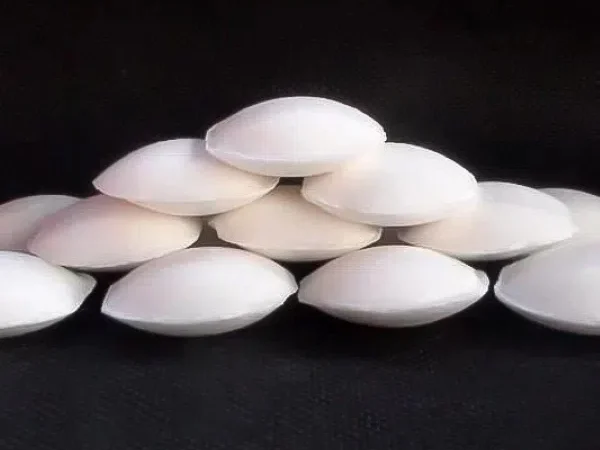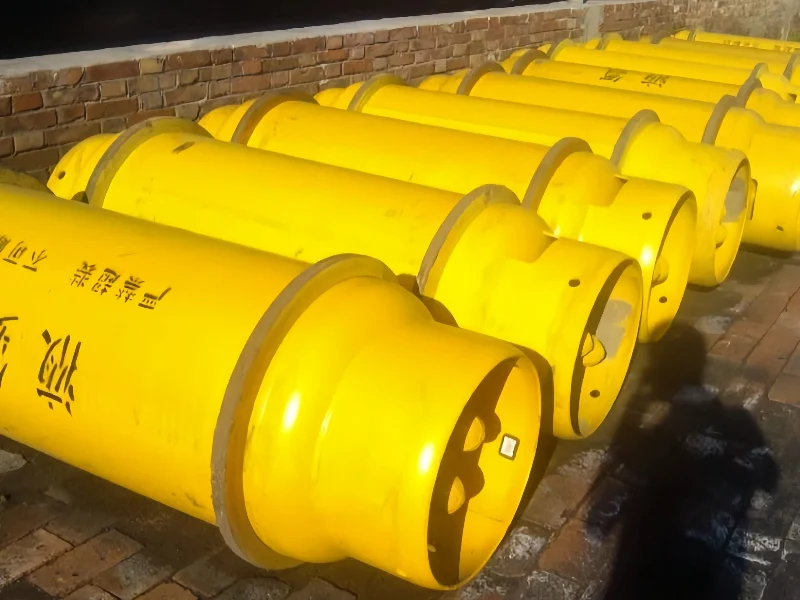
Introduction
Sodium cyanide (NaCN) is a crucial chemical in the realm of mineral processing, despite its highly toxic nature. Its unique chemical properties enable it to play significant roles in various processes, especially in the extraction of precious metals. This article delves into the specific functions and applications of sodium cyanide in mineral processing.
Chemical Properties of Sodium Cyanide
Sodium cyanide is a white, crystalline powder with a faint, bitter almond odor. It is highly soluble in water and is hygroscopic, meaning it readily absorbs moisture from the air. In an aqueous solution, it dissociates into sodium ions (Na⁺) and cyanide ions (CN⁻). The cyanide ion is the key species responsible for its reactivity in mineral processing. It has a strong affinity for certain metal ions, which forms the basis of its applications.
Role in Gold and Silver Extraction
Gold Extraction
One of the most well - known applications of Sodium Cyanide in mineral processing is in gold extraction. The process is based on the fact that gold can form stable complexes with cyanide ions in the presence of oxygen. The overall reaction can be represented as follows:
4Au + 8NaCN + O₂+ 2H₂O → 4Na[Au(CN)₂]+ 4NaOH
In this reaction, gold is oxidized by oxygen and then forms a soluble complex, sodium aurocyanide (Na[Au(CN)₂]). This complex can then be separated from the ore matrix, typically through a process of adsorption onto activated carbon or by using zinc dust for cementation to precipitate the gold.
The use of Sodium cyanide in gold extraction offers several advantages. It is relatively inexpensive compared to some alternative methods. The process is also highly efficient, capable of recovering gold from low - grade ores. For example, in large - scale gold mining operations such as those in South Africa and Australia, cyanide leaching is widely used. However, the use of sodium cyanide in gold extraction also raises significant environmental and safety concerns due to its toxicity.
Silver Extraction
Similar to gold, silver can also be extracted using sodium cyanide. Silver forms a soluble complex with cyanide ions, such as Na[Ag(CN)₂]. The extraction process for silver is conceptually similar to that of gold, involving the leaching of the ore with a cyanide - containing solution. This method is effective for extracting silver from various silver - bearing ores, including argentite (Ag₂S) and horn silver (AgCl).
Role in Metal Separation and Purification
Selective Dissolution
Sodium cyanide can be used to selectively dissolve certain metals from a mixture of minerals. For instance, in a complex ore containing copper, zinc, and other metals along with precious metals, sodium cyanide can be used to preferentially dissolve gold and silver while leaving other base metals behind. This selectivity is based on the relative stability of the metal - cyanide complexes formed. The stability constants of metal - cyanide complexes vary, with gold and silver forming very stable complexes, while some base metals form less stable complexes under certain conditions.
For example, in a copper - gold ore, the copper can be first removed by other means such as flotation or acid leaching. Then, sodium cyanide can be used to leach the remaining gold. This selective dissolution allows for the efficient separation and purification of valuable metals from complex ores.
Complexation for Purification
Once the metal - cyanide complexes are formed, they can be further processed for purification. For example, in the case of gold extraction, after the formation of Na[Au(CN)₂], the complex can be separated from impurities in the solution. The cyanide complex can be treated with a reducing agent to precipitate pure gold. In some cases, the metal - cyanide complexes can be used in electroplating processes. In electroplating, the metal - cyanide complex serves as a source of metal ions. The cyanide ions in the complex help to control the deposition rate of the metal on the substrate, resulting in a more uniform and adherent metal coating.
Environmental and Safety Considerations
Despite its usefulness in mineral processing, sodium cyanide is extremely toxic. Even small amounts can be lethal if ingested, inhaled, or absorbed through the skin. In the environment, if sodium cyanide is released, it can pose a serious threat to aquatic life and terrestrial organisms. Cyanide can react with water to form hydrogen cyanide (HCN), a highly volatile and toxic gas.
To mitigate these risks, strict safety and environmental regulations govern the use, storage, and transportation of sodium cyanide in the mineral processing industry. Mining and processing facilities must implement proper containment and treatment systems to prevent the release of cyanide - containing waste. For example, treatment methods such as alkaline chlorination, hydrogen peroxide oxidation, and sulfur dioxide - air oxidation are used to break down cyanide in wastewater before it is discharged.
Conclusion
Sodium cyanide plays a vital role in mineral processing, particularly in the extraction of precious metals like gold and silver and in metal separation and purification processes. Its ability to form stable complexes with certain metal ions makes it an effective reagent. However, its extreme toxicity necessitates strict safety and environmental management. As the mining industry continues to evolve, there is a growing need to develop alternative methods that can achieve similar results without the associated risks of using sodium cyanide. Nevertheless, for the time being, sodium cyanide remains an important chemical in the mineral processing toolkit, with its applications carefully balanced against the need for safety and environmental protection.
- Random Content
- Hot content
- Hot review content
- Toxicity Assessment of Sodium Cyanide and Relevant Hazard Prevention Measures
- Sodium bisulfite 99% High Quality Factory Supply
- MERCURY METAL Extra Pure | CAS 7439-97-6
- Sodium Peroxide
- Hydrogen Peroxide
- Sodium Metasilicate Pentahydrate
- Cupric Chloride 98%
- 1Discounted Sodium Cyanide (CAS: 143-33-9) for Mining - High Quality & Competitive Pricing
- 2Sodium Cyanide 98% CAS 143-33-9 gold dressing agent Essential for Mining and Chemical Industries
- 3Sodium Cyanide 98%+ CAS 143-33-9
- 4Anhydrous Oxalic acid 99.6% Industrial Grade
- 5Oxalic acid for mining 99.6%
- 6Soda Ash Dense / Light 99.2% Sodium Carbonate Washing Soda
- 7Reagent Grade/Industrial Grade Hydrochloric Acid min.31%
- 1Sodium Cyanide 98% CAS 143-33-9 gold dressing agent Essential for Mining and Chemical Industries
- 2High Quality 99% Purity of Cyanuric chloride ISO 9001:2005 REACH Verified Producer
- 3 High-Quality Sodium Cyanide for Leaching
- 4Powdery emulsion explosive
- 5Industry Grade Electron grade 98% Sulfuric Acid H2SO4 Sulphuric Acid Battery Acid Industrial Sulfuric Acid
- 6Colloidal emulsion explosive
- 7sodium hydrosulfide 70% flakes used Mining Industry












Online message consultation
Add comment: